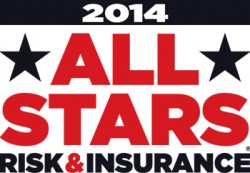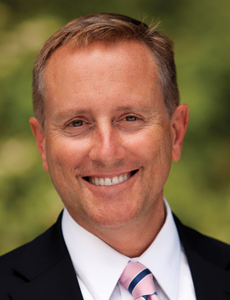2014 Risk All Star: Jeff Driver
A Driven Visionary
Jeff Driver was an 18-year-old orderly in a hospital emergency room when a child died before his eyes. The child had been misdiagnosed and moved to the wrong floor before his respiratory tract closed up.
The experience launched Driver into health care risk management, where he’s been for a quarter-century, always “chasing the effectiveness” of loss control and patient safety. One could say he’s caught it.
Driver is no stranger to the risk management limelight — he was president of the American Society for Healthcare Risk Management in the past decade — but Risk & Insurance® is placing him back in the light in large part for the creativity of his most recent efforts as chief risk officer at the Stanford University Medical Center.
The highlight is his creation of a new reciprocal risk retention group (RRG) called the Professional Exchange Assurance Co. (PEAC) to help Stanford keep ahead of mandates from the Affordable Care Act.
All health care entities, particularly hospital groups, are feeling the urge to consolidate because of the efficiencies of size and the drive to create Accountable Care Organizations (ACOs). In California, Stanford faces the twist that state law prohibits hospitals from directly employing doctors; they must be employed through “physician foundations.”
Stanford has two such foundations with plans to include 500 community physicians within three years. Driver had to devise a way to bring these doctors into the Stanford risk management and patient safety program, while mitigating liability and brand risk.
The particular RRG structure, now in place for nearly two years, works for a few reasons. Namely, it gives the affiliated physicians “skin in the game” because they technically own the captive and will enjoy profit-sharing if losses are kept low.
It also works because Stanford Medical’s other captive—the 20-year old, segregated cell, Bermuda-based SUMIT—cannot provide insurance to for-profit physician groups because of tax rules. So SUMIT still provides coverage and services to its in-house faculty physicians while PEAC steps in for affiliated doctors.
With both, Driver can ensure risk management consistency across the enterprise and that effectiveness he has pursued his whole career.
“He has created a vehicle to kind of indoctrinate these newly acquired physicians in much more modern risk management practices,” said Gigi Norris, Aon managing director.
“Jeff is very visionary … and he is very mission driven.”
Driver and his risk management team of 25 are spreading Stanford’s best practices beyond the university as well. One benefit of the RRG structure is that Driver created another entity, The Risk Authority, to serve as its necessary attorney-in-fact, as well as a service provider for external health care entities.
It delivers Stanford risk management products and services — like tools for early resolution and loss, claims and litigation management, patient safety consulting and value-driven enterprise risk management — around the world.
Driver’s success comes in part because of his leadership. He is able to build a team, empower its members, and motivate them toward success with his vision.
Success builds trust with senior management, which leads to larger teams, bigger projects and more success.
And he’s succeeded because he’s willing to try anything to succeed.
“If people really focus in on how they can do things better rather than doing the same thing, that would serve our patients and our communities very well,” he said.
_____________________________________________
 Risk All Stars stand out from their peers by overcoming challenges through exceptional problem solving, creativity, perseverance and/or passion.
Risk All Stars stand out from their peers by overcoming challenges through exceptional problem solving, creativity, perseverance and/or passion.
See the complete list of 2014 Risk All Stars.











